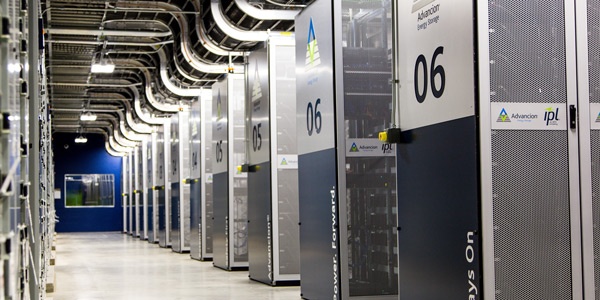By Amanda Durish Cook
INDIANAPOLIS — After demonstrating the capabilities of its new 20-MW battery for five months, Indianapolis Power and Light says it’s time for it to get paid.
The energy storage system at its Harding Street Station here has been providing MISO with primary frequency response since May. But the company told FERC in an Oct. 21 complaint that the battery is “supporting the grid with no means for compensation for the services rendered” (EL17-8).
The complaint asks FERC to compel MISO to update its energy storage definitions and compensation.
“Nothing [in the Tariff] exists to allow the battery to participate in the regulation market and be appropriately paid,” Lin Franks, IPL’s senior strategist for RTO, FERC and compliance initiatives, told RTO Insider in an interview. “We’re hoping FERC will see the wisdom in compensating automatic frequency control, injecting when frequency is too low and withdrawing when frequency is too high.”
IPL argues its battery should be paid instead of charged when “withdrawing [power] in response to a frequency deviation.”
Franks said IPL is not trying to be critical of MISO in making the filing. She pointed out that in 2009, when MISO opened its ancillary services market in accordance with FERC Order 888, the requirement did not include details on how fast-start resources recover costs.
“That was fine for back then, but now that we have a lithium ion battery in the MISO footprint, it’s no longer just and reasonable. What was just and reasonable in 2009 isn’t necessarily just and reasonable now,” she said.
Franks said creating proper definitions and a compensation mechanism is an “industry-wide kind of challenge.”
“Nobody is mad at anybody. It’s just time to make a change … and we don’t want this to get on the back burner,” Franks said.
The battery — consisting of eight 2.5-MW blocks — is using the interconnection facilities of two gas turbine generator units, which connect to the Harding Street South substation. (See FERC Approves 1st Storage GIA in MISO.)
Franks said settlement and dispatch for IPL’s lithium ion batteries are “vastly different” than for MISO’s current Type II storage energy and demand response resources. IPL claims MISO’s dispatch protocols are currently tailored to flywheel storage only.
MISO spokesperson Jay Hermacinski said the RTO is assessing its next steps before responding to the complaint.
“It is relevant to point out that at MISO and across the industry, there are numerous discussions at both the policy and technical levels to determine the most efficient and effective ways to integrate new technology, including storage, to the grid,” Hermacinski said.
He added that MISO has begun work on broader storage issues, starting with a stakeholder workshop in January and through its market roadmap process. He also said MISO staff will attend FERC’s technical conference on storage Wednesday (AD16-25). (See “FERC Calls Tech Conference on Storage,” Federal Briefs.)
MISO is currently considering including medium-term energy storage resources in its definition of DR resources. (See MISO Stakeholders Provide Ideas on Incorporating Storage.) IPL called the current stakeholder process “indeterminate” and asked for “tight time limits on any required MISO compliance filings.”
Franks insists that MISO should gather stakeholders to work on new storage definitions. “You really have to start all over. It’s a very time-consuming process,” she said.
IPL has committed to sharing “as much data as it practically can,” Franks said, to help explain the battery’s benefits.
In its filing, IPL suggested using PJM’s Regulation D payment factor as a provisional model until MISO can develop its own method for compensation.
PJM developed the regulation market payment after being approached by IPL parent company AES in 2009. AES’ Laurel Mountain facility in West Virginia — 98 MW of wind generation and 64 MW of integrated battery-based storage — has been providing PJM regulation service since October 2011.
The PJM payment mechanism is “certainly not going to be perfect for the MISO footprint,” Franks said. “But for the interim period, we’re suggesting that it is equitable and fair until MISO does its own body of work.”
Franks said working through the stakeholder process to incorporate a new storage definition and compensation into the Tariff would take about two to five years. She added that while IPL has a few ideas on what storage definitions might look like, it would rather reveal them in MISO’s stakeholder process.
“We prefer to share our data and testing and experience and work together to find a way that actually works to present to the stakeholders. No man is an island,” Franks said.
The Energy Storage Association lauded IPL’s move and urged FERC to take action to stop IPL from having to “operate the system in a suboptimal manner” and degrade the useful life of the battery.
“Without proper market structures that recognize the value delivered by energy storage systems, there is no way that the system can be dispatched cost-effectively. And without market signals that reflect the storage system’s operating parameters, the storage system could be unintentionally compromised or damaged,” the group said.
IPL’s complaint has attracted motions to intervene from American Municipal Power, Calpine, the Electric Power Supply Association, the Indiana Utility Regulatory Commission, Alliant Energy and the Coalition of MISO Transmission Customers and battery maker Alevo.





